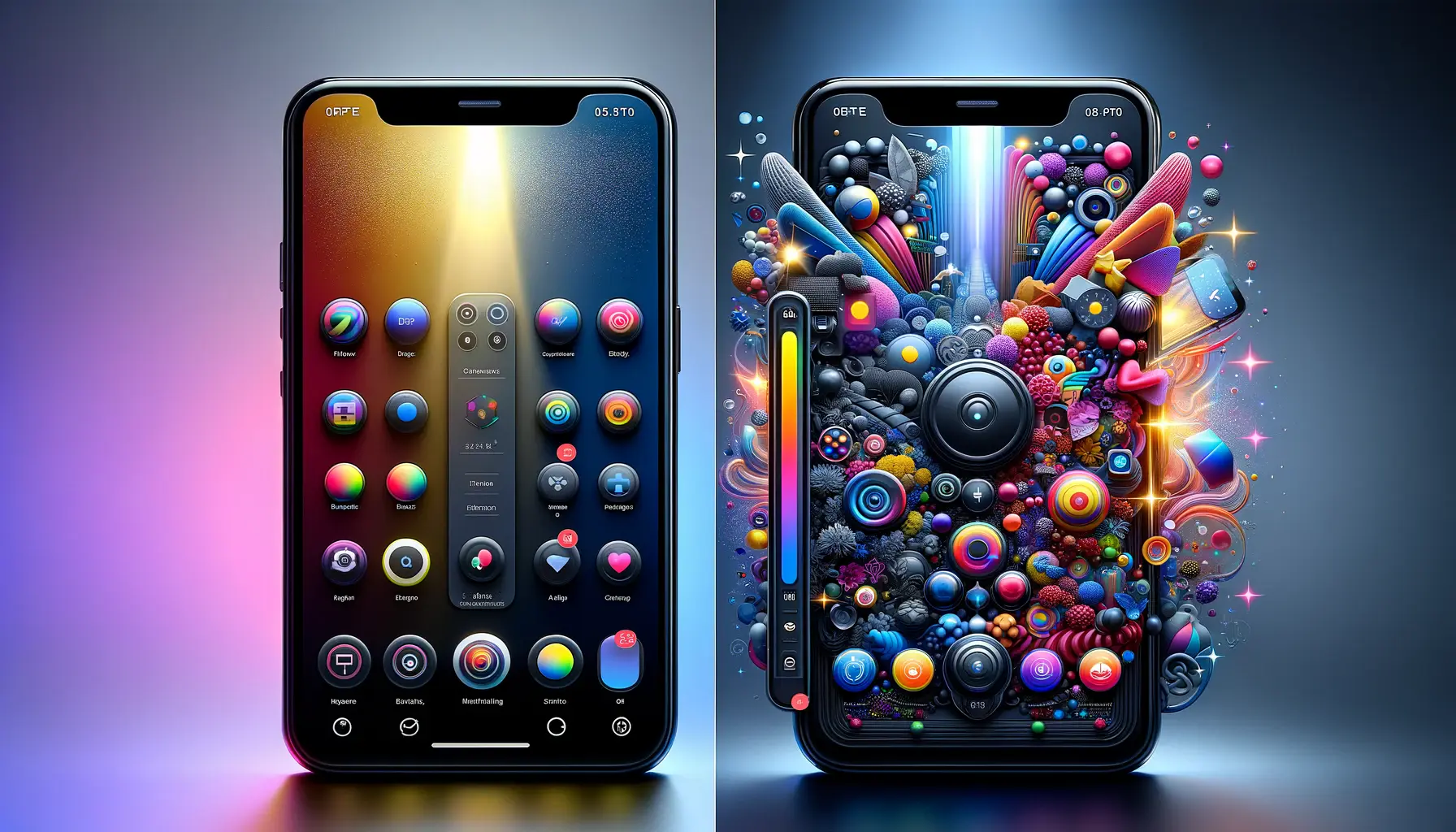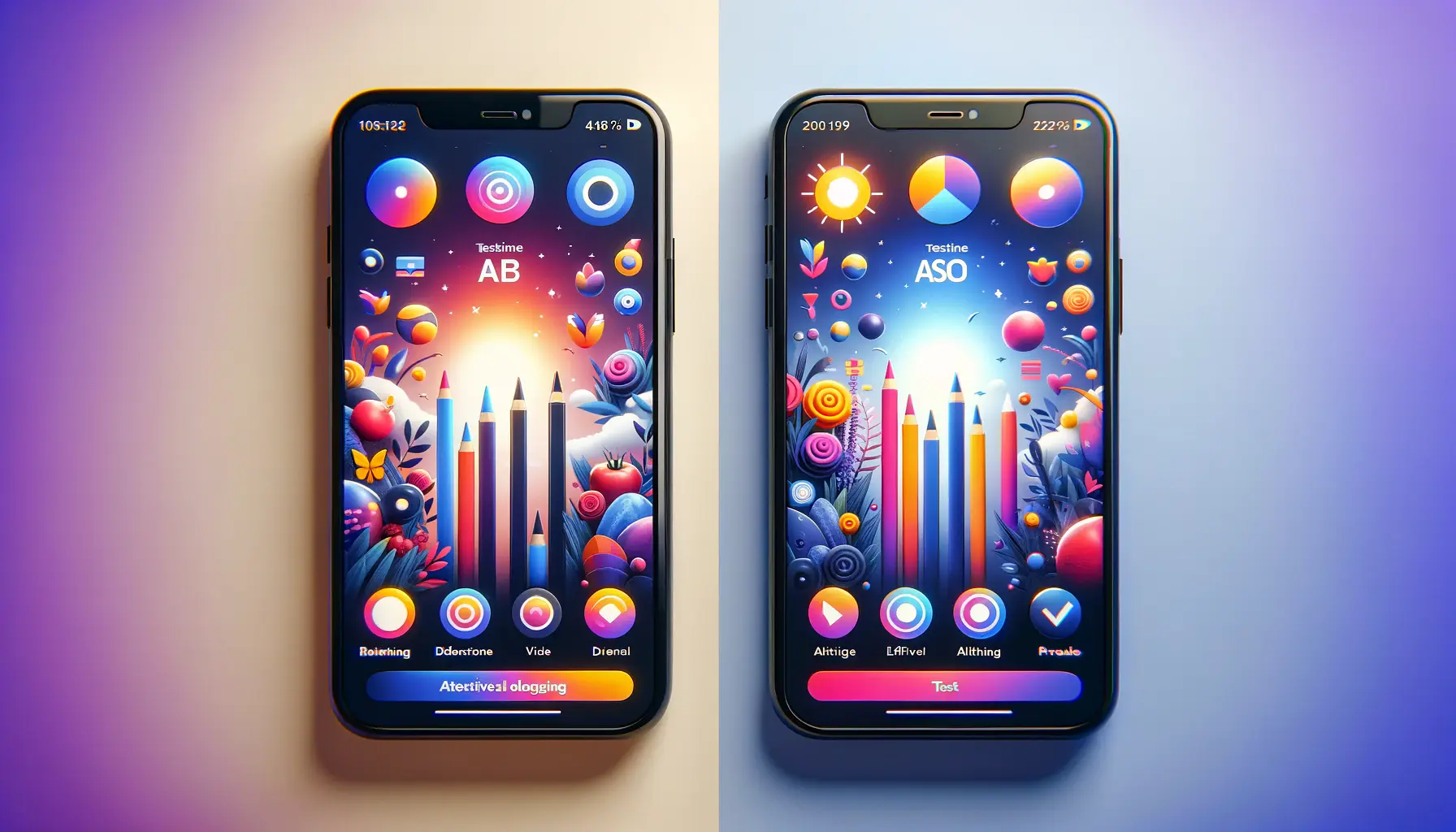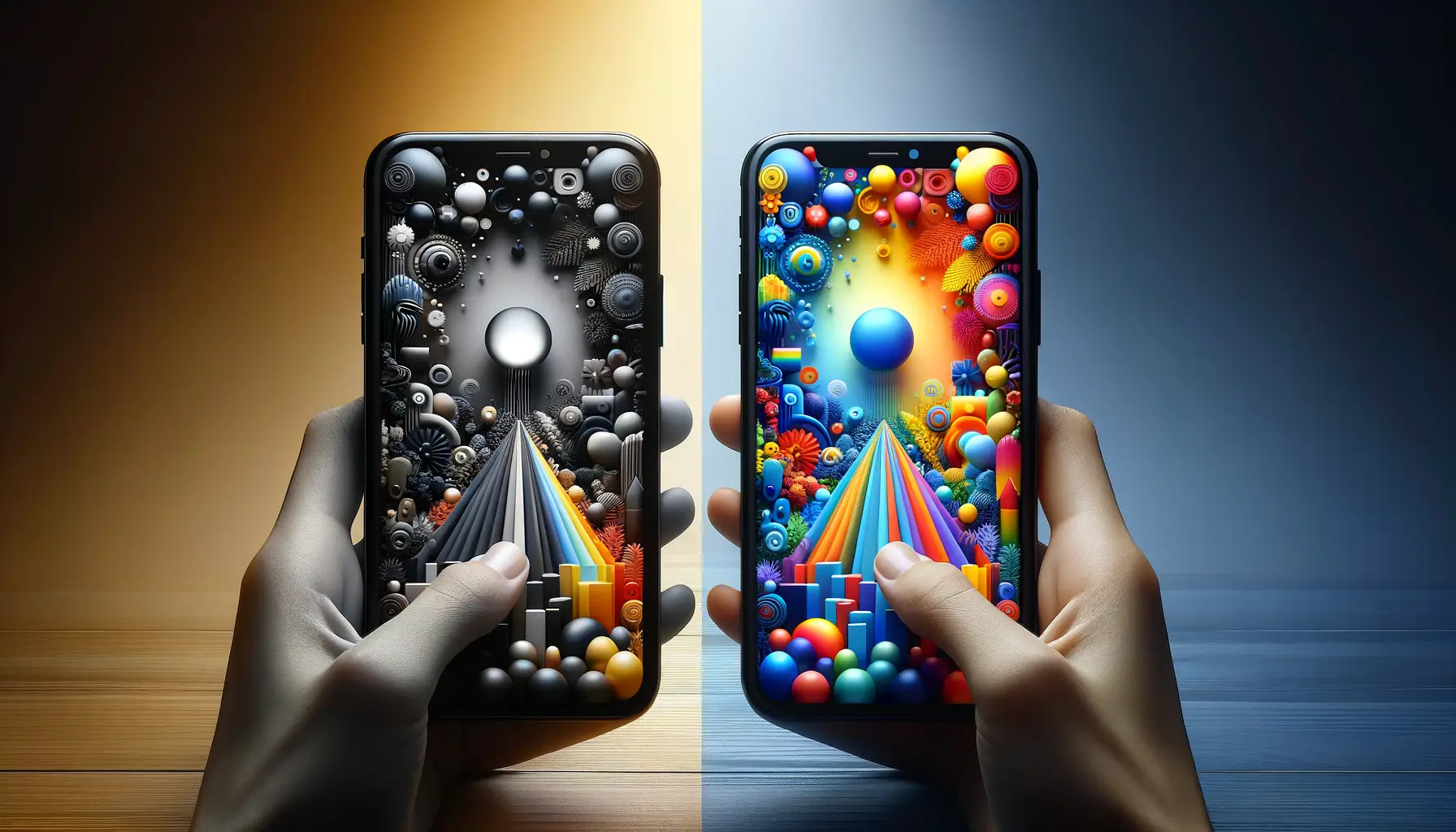The digital landscape is saturated with mobile applications, each vying for attention and eager to climb the ranks within app stores.
In this fiercely competitive arena, the significance of App Store Optimization (ASO) has never been more pronounced, especially when it comes to the visual appeal of app screenshots.
Optimized app screenshots do not merely adorn the app listing but serve as a pivotal element in influencing user decisions, enhancing visibility, and ultimately boosting downloads.
Understanding the art and science of optimizing app screenshots requires a deep dive into strategies that capture the essence of your application, compelling potential users to take action.
Through meticulously crafted visuals, developers and marketers can communicate the app’s value proposition, functionality, and user experience, all at a glance.
This article explores the multifaceted approach to optimizing app screenshots, ensuring that your app not only stands out but also resonates with your target audience, encouraging more downloads and engagement.
- Understanding the Importance of ASO Screenshots
- Key Elements of Effective ASO Screenshot Design
- Optimizing Screenshots for Different App Stores
- Utilizing A/B Testing to Refine Screenshots
- Highlighting User Benefits Through Screenshots
- Incorporating User Feedback and Reviews in Screenshots
- Leveraging Localization in ASO Screenshots
- Mastering the Art of Optimized App Screenshots
- Optimized App Screenshots: FAQs
Understanding the Importance of ASO Screenshots
The journey to optimizing app screenshots begins with a comprehensive understanding of their importance in ASO.
Screenshots occupy prime real estate on your app’s listing page, offering a visual snapshot of what users can expect.
These images are more than just decorative elements; they are powerful marketing tools that can make or break a user’s decision to download.
The right screenshots can captivate potential users, highlighting the app’s unique features and benefits in a visually engaging manner.
Moreover, optimized screenshots contribute to a higher conversion rate, as they play a crucial role in the user’s decision-making process.
By showcasing the core functionalities and appealing aspects of the app, screenshots can effectively communicate the app’s value.
This visual representation must be aligned with the user’s expectations and interests, thus requiring a strategic approach to selecting and designing each screenshot.
Strategies for Captivating Screenshots
Creating captivating screenshots involves more than just displaying in-app content.
It requires a strategic blend of creativity, marketing insight, and user psychology.
Highlighting the app’s main features through screenshots, for instance, can guide users towards understanding its utility and uniqueness.
Additionally, incorporating lifestyle imagery that reflects real-world use cases can significantly enhance the relatability and appeal of the screenshots.
Another effective strategy is to use annotations and brief captions within the screenshots.
These textual elements can succinctly convey the app’s benefits and guide the viewer through the visual journey.
However, it’s crucial to balance visual and textual information to avoid overwhelming the viewer, ensuring the screenshots remain clean, informative, and engaging.
Optimizing app screenshots is a critical aspect of ASO that enhances app visibility, communicates its value, and boosts download rates.
Key Elements of Effective ASO Screenshot Design
Designing effective ASO screenshots that resonate with your target audience and encourage downloads involves focusing on several key elements.
These components are crucial in making your app stand out in a crowded marketplace and can significantly impact your app’s conversion rates.
Understanding and implementing these design elements can transform your app screenshots from simple images to compelling visual narratives that capture and retain user interest.
Visual Clarity and Simplicity
At the core of effective screenshot design is visual clarity.
Screenshots must be immediately understandable, showcasing the app’s features in a clear and accessible manner.
This involves choosing images that are directly relevant to the app’s core functionalities and user benefits.
Simplicity in design helps potential users to quickly grasp what the app is about, without getting overwhelmed by too much information or clutter.
Furthermore, the use of vibrant colors and high-contrast visuals can make screenshots more eye-catching and memorable.
This visual strategy not only improves aesthetic appeal but also aids in highlighting key features or actions within the app.
Consistency in Branding
Maintaining a consistent branding throughout your screenshots is essential for creating a cohesive visual identity for your app.
This includes using consistent color schemes, font styles, and imagery that align with your brand’s overall look and feel.
Consistent branding helps to build trust with potential users and reinforces your app’s identity across various marketing channels.
- Visual Theme: Stick to a color scheme and visual theme that reflects your brand and app’s personality.
- Typography: Use fonts that are readable and consistent with your app’s branding.
- Imagery: Choose images that are aligned with your brand’s messaging and aesthetic.
Highlighting Key Features
Focusing on your app’s key features in the screenshots is crucial for demonstrating its value proposition.
Each screenshot should highlight a different feature or benefit, giving potential users a comprehensive overview of what the app offers.
This can include showcasing innovative functionalities, user-friendly interface, or any unique aspects that set your app apart from competitors.
- Feature One: Illustrate how the app solves a common problem or meets a need.
- Feature Two: Showcase the app’s ease of use or user-friendly interface.
- Feature Three: Highlight any unique or exclusive features that competitors lack.
Effective ASO screenshot design is a blend of clarity, simplicity, consistent branding, and highlighting key features, all of which are essential for attracting and engaging potential users.
Optimizing Screenshots for Different App Stores
The strategy behind optimizing app screenshots extends beyond design and into the realm of platform-specific requirements and preferences.
The Apple App Store and Google Play Store, while serving the same fundamental purpose, have different guidelines and user interfaces.
Tailoring your screenshots to each platform can significantly impact their effectiveness and your app’s overall visibility.
Understanding these nuances and adjusting your screenshots accordingly can give your app a competitive edge, ensuring it appeals directly to the users of each platform.
Apple App Store Optimization
For the Apple App Store, the emphasis is on quality and simplicity.
Screenshots must be high-resolution and can include up to 10 images per listing.
The first two to three screenshots are crucial, as they appear in search results and need to immediately grab the user’s attention.
Additionally, the App Store supports video previews, which can act as the first “screenshot” and offer a dynamic way to showcase your app.
- Dimensions and Quality: Ensure screenshots meet the recommended resolution and aspect ratio for different Apple devices.
- Video Previews: Consider creating an engaging video preview to highlight your app’s features dynamically.
- Key Visuals First: Place the most impactful images or video at the beginning of your screenshot sequence.
Google Play Store Optimization
The Google Play Store allows for more flexibility in terms of screenshot quantity, with a minimum requirement of two screenshots but the ability to upload up to eight.
This platform places a stronger emphasis on storytelling through screenshots, encouraging developers to use a sequence of images to convey the app’s functionality and user journey.
Unlike the App Store, Google Play also prominently features landscape screenshots, which can be particularly beneficial for games or media-centric apps.
- Storyboard Approach: Use a series of screenshots to tell a story about your app’s user experience.
- Landscape Orientation: Consider utilizing landscape screenshots to take full advantage of Google Play’s layout, especially for games.
- Localization: Tailor screenshots to your target demographic, including language and cultural nuances, to improve engagement.
Adapting your app screenshots for the specific requirements and user expectations of the Apple App Store and Google Play Store is crucial for maximizing visibility and download rates.
Utilizing A/B Testing to Refine Screenshots
A/B testing, or split testing, is an invaluable strategy for optimizing app screenshots.
By comparing two versions of a screenshot, developers and marketers can gather empirical data on user preferences and behaviors, leading to informed decisions that enhance app store performance.
This methodical approach allows for continuous refinement, ensuring that your screenshots remain appealing and effective over time.
Implementing A/B testing requires a structured approach, starting with identifying variables, defining metrics for success, and systematically analyzing the results.
This process not only optimizes screenshots but also provides insights into user engagement and conversion optimization strategies.
Setting Up A/B Tests for Screenshots
To set up an A/B test, start by choosing one element to change between the two versions.
This could be the screenshot’s background color, the presence of text, or the featured app functionality.
Ensure that all other elements remain constant to accurately measure the impact of the change.
Define clear metrics for success, such as click-through rate or download rate, to evaluate the performance of each version.
- Select a variable to test: For example, test two different headlines or two different feature highlights.
- Define success metrics: Decide what metrics will indicate success, such as an increase in downloads or higher engagement rates.
- Analyze results: Use app store analytics to determine which version performed better according to your predefined metrics.
Interpreting A/B Testing Results
Interpreting the results of A/B tests goes beyond simply identifying the “winner.” It involves understanding why one version outperformed the other and how these insights can inform future design and marketing strategies.
Analyze user feedback and engagement patterns to uncover preferences and behaviors.
This analysis can reveal broader trends that apply beyond just the tested elements, offering strategic insights for overall app optimization.
- Identify winning elements: Determine which changes led to better performance and why.
- Apply insights broadly: Use the learnings from the test to inform other aspects of your app’s presentation and marketing strategy.
- Iterate continuously: A/B testing is an ongoing process. Regularly test new ideas to keep improving user engagement and conversion rates.
A/B testing is a critical tool in the ASO toolkit, enabling developers to make data-driven decisions that enhance the visual appeal and effectiveness of app screenshots.
Highlighting User Benefits Through Screenshots
Optimized app screenshots go beyond showcasing app features; they emphasize the benefits these features bring to users.
This user-centric approach can significantly enhance the appeal of your app, as it directly addresses potential users’ needs and desires.
By framing screenshots in a way that highlights the practical and emotional benefits of the app, developers can create a compelling narrative that resonates with their target audience.
Understanding and effectively communicating the value proposition through screenshots requires a deep understanding of your user base, including their challenges, aspirations, and the solutions they seek in an app.
Identifying Core User Benefits
To effectively highlight user benefits, start by identifying the core advantages your app offers.
These can range from saving time, reducing stress, providing entertainment, or facilitating connections with others.
Each screenshot should then be designed to showcase these benefits in a clear and engaging manner, using visual cues and annotations where appropriate.
- Time-saving features: Show how your app simplifies tasks or workflows.
- Stress reduction: Illustrate the calming or organizational aspects of your app.
- Entertainment value: Highlight fun, engaging content or features that entertain users.
Creating Emotional Connections
Screenshots that evoke an emotional response can be incredibly effective in driving downloads.
By showcasing scenarios that users can empathize with or aspire to, you can create a deeper connection between your app and your audience.
Use imagery and contexts that reflect your users’ experiences or desires, making your app’s benefits more tangible and desirable.
- Show real-life scenarios where your app can be used, highlighting relatable situations.
- Use visual metaphors or symbols that resonate with your target audience’s emotions and values.
- Include social proof, such as testimonials or user-generated content, to build trust and credibility.
Focusing on user benefits in your app screenshots can create a powerful narrative that not only showcases what your app does but also why it matters to your users.
Incorporating User Feedback and Reviews in Screenshots
Incorporating user feedback and reviews into your app screenshots is a strategic move that can significantly boost trust and credibility among potential users.
Positive reviews and testimonials, when visually integrated into your app’s presentation, serve as social proof, reassuring users about the quality and reliability of your app.
This approach not only highlights the features and benefits of your app but also leverages the power of community endorsement.
Strategically selecting and showcasing user feedback requires a careful balance between authenticity and marketing.
It’s crucial to choose reviews that are genuine and reflect the diverse experiences of your user base, while also aligning with your app’s key selling points.
Choosing Impactful Reviews
Selecting the right reviews to feature in your screenshots involves identifying testimonials that highlight your app’s strengths and user benefits.
Look for feedback that speaks to the core features of your app, its ease of use, and the positive impact it has had on users’ lives.
Incorporating a variety of reviews can also demonstrate the broad appeal and versatility of your app.
- Highlight reviews that mention specific benefits or features that align with your app’s value proposition.
- Include testimonials from users who represent your target demographic to enhance relatability.
- Ensure the selected reviews are concise and easily readable within the screenshot format.
Designing Screenshots with Reviews
Designing screenshots that include user reviews requires thoughtful consideration of layout and readability.
Reviews should be integrated in a way that complements the visual flow of the screenshot, without overshadowing the app’s features or benefits.
Using visually distinct elements such as quote marks or a different background can help set the review apart, making it a focal point without disrupting the overall design.
- Use a clean, legible font for the review text to ensure it’s easy to read at a glance.
- Consider using a contrasting color or a dedicated section within the screenshot to highlight the review.
- Balance the placement of reviews with images or visuals of your app in action, maintaining a cohesive and appealing design.
Leveraging user feedback in your app screenshots not only showcases your app’s features and benefits but also builds trust with potential users through the power of social proof.
Leveraging Localization in ASO Screenshots
Localization of app screenshots is a powerful strategy for reaching a global audience and enhancing user engagement across different regions.
By adapting your screenshots to cater to the language, cultural nuances, and preferences of various markets, you can significantly increase the relevance and appeal of your app.
Localization goes beyond mere translation; it involves a deep understanding of local contexts, values, and behaviors, ensuring that your app resonates with users worldwide.
Effectively localized screenshots can lead to improved download rates and user retention by demonstrating that your app is tailored to meet the specific needs and expectations of each target audience.
Adapting to Cultural Nuances
When localizing screenshots, it’s crucial to consider cultural nuances that might affect the perception of your app.
This includes the use of colors, symbols, and imagery that are culturally appropriate and resonate with the local audience.
Additionally, adapting your app’s value proposition to highlight features or benefits that are particularly relevant to each market can make your screenshots more compelling.
- Research cultural preferences to ensure your screenshots are aligned with local values and expectations.
- Adapt visual elements and messaging to emphasize aspects of your app that are most relevant to each culture.
- Use local landmarks or culturally significant imagery to enhance relatability and appeal.
Implementing Effective Translation
Effective translation is a cornerstone of successful localization.
It’s not just about converting text from one language to another but ensuring that the language used in your screenshots is natural, idiomatic, and engaging for the target audience.
This may involve rephrasing marketing messages to better suit local linguistic styles or using region-specific terminology.
- Work with native speakers or professional translators to ensure the accuracy and naturalness of your translations.
- Consider local slang, idioms, and expressions that can make your screenshots more relatable and engaging.
- Regularly update and refine translations based on user feedback and changing language trends.
Neglecting localization in your ASO strategy can result in missed opportunities and decreased relevance in global markets.
Mastering the Art of Optimized App Screenshots
In the digital ecosystem where first impressions hold immense power, optimized app screenshots emerge as a cornerstone of a successful App Store Optimization (ASO) strategy.
The journey to boosting app downloads is complex and multifaceted, with screenshots playing a pivotal role in making your app not only visible but also desirable.
This article has traversed the critical aspects of creating captivating, effective, and strategic screenshots that resonate with potential users, encouraging them to download and engage with your app.
Key Takeaways for Optimizing Your App Screenshots
From understanding the essence of ASO screenshots to implementing user feedback and localizing content, the insights provided aim to serve as a comprehensive guide for developers and marketers alike.
Each section of this article underscores the significance of meticulously crafted screenshots, tailored to showcase the best of what your app has to offer while aligning with the expectations and preferences of your target audience.
- Visual Clarity and Consistency: Ensuring that your screenshots are clear, concise, and reflective of your brand identity is fundamental. This includes paying close attention to the design elements such as colors, fonts, and imagery.
- Platform-Specific Requirements: Tailoring your screenshots to fit the unique guidelines and user interfaces of the Apple App Store and Google Play Store enhances visibility and appeal.
- User-Centric Approach: Focusing on the benefits your app offers from the users’ perspective can significantly impact the effectiveness of your screenshots. This involves highlighting features that solve problems, improve lives, or provide entertainment.
- A/B Testing for Perfection: Employing A/B testing strategies allows you to refine your screenshots based on empirical data, ensuring they resonate well with potential users.
- Incorporation of Social Proof: Leveraging user feedback and reviews within your screenshots adds a layer of credibility and trust, compelling more users to download your app.
- Embracing Localization: Adapting your screenshots for different languages and cultural contexts can vastly improve your app’s global reach and user engagement.
In conclusion, optimized app screenshots are not just about aesthetic appeal; they are a strategic tool that, when utilized effectively, can significantly boost your app’s downloads and user engagement.
By incorporating the insights and strategies outlined in this article, app developers and marketers can craft screenshots that not only captivate but also convert potential users into loyal advocates of their apps.
Remember, in the realm of ASO, your app screenshots are not just pictures; they are your first and most impactful pitch to your prospective users.
Boost your mobile app's success with our guaranteed App Store Optimization (ASO) service. Leave it to the experts!
Optimized App Screenshots: FAQs
Discover answers to the most commonly asked questions about optimizing your app screenshots for maximum impact in the app stores.
It’s recommended to use the maximum allowed by the platform (up to 10 for Apple App Store and 8 for Google Play) to showcase your app’s features and benefits comprehensively.
Follow platform guidelines: 1242 x 2208 pixels for the Apple App Store and 1080 x 1920 pixels for Google Play Store, ensuring high quality and clarity.
It depends on your app’s usage and platform. Games often benefit from landscape, while other apps may prefer portrait. Consider the best showcase for your app’s features.
Use vibrant colors, clear fonts, and showcase real-life benefits. Including unique features and user testimonials can also make your screenshots more compelling.
Yes, localizing screenshots for different markets can significantly enhance user engagement and increase downloads by making your app more relatable to various audiences.
Yes, concise and informative text can clarify features and benefits, but it should not overwhelm the visual experience. Keep it simple and impactful.
Absolutely. A/B testing allows you to refine and select screenshots that resonate best with your target audience, optimizing your app’s appeal and download rates.
Update screenshots with major app updates, new features, or to refresh your marketing. Regular updates can keep your app’s presentation fresh and engaging.















